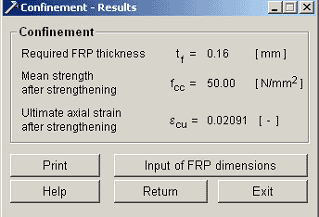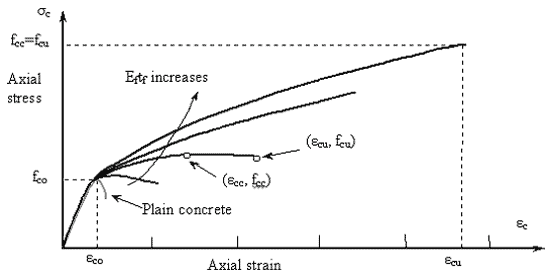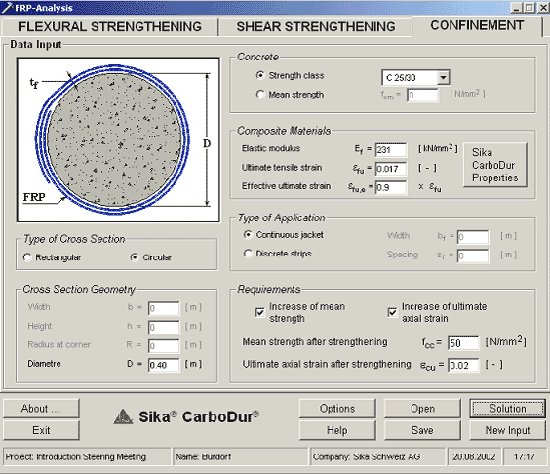 |
 |
 |
 |
 |
 |
 |
 |
||||||
|
|
|
||||||||||||
| |
|
 |
 |
||||||||||
|
|||||||||||||
 |
|||||||||||||||||||||||||
 |
|
||||||||||||||||||||||||
 |
|
||||||||||||||
 |
Confinement |
||||||||||||||
|
|
|||||||||||||||
|
The main objectives of confinement are: |
|||||||||||||||
In case of circular columns, these goals can be achieved by applying external FRP jackets, either continuously all over the surface or discontinuously as strips. In the case of rectangular columns, the confinement can be provided with rectangular-shaped reinforcement, with corners rounded before application. Note that rectangular confining reinforcement is less effective (but still possible) as the confinement action is mostly located at the corners and a significant jacket thickness needs to be used between corners to restrain lateral dilation and rebar buckling. The stress-strain response of FRP-confined concrete is illustrated schematically in the following picture:
Input:
The total required thickness tf of the FRP jacket is provided. Upon completion of the solution process, the "Results" window provides the following: 
After the input of the effective thickness of the FRP - layer, the number of layers and the effective reinforcing capacity can be calculated. |
|||||||||||||||
| © Sika Services
AG Construction 2002 / bb |


 fu,e,
which is, in general, less than the uni-axial tensile strength
fu,e,
which is, in general, less than the uni-axial tensile strength 